Confused about hedgehogs vs tenrecs? Since they are similar in many ways, we decided to explore the similarities, and also the differences. To be clear, hedgehogs and tenrecs are not even remotely related, but do have similar behaviors. Our goal isn't to persuade you in one direction or another. Rather, we want to provide information to anyone that is on the fence about hedgehogs versus tenrecs as a pet. So there is no confusion, we are only comparing the pet version of these two adorable animals.
Pet hedgehogs in the United States are typically African Pygmy hedgehogs or some variation of that breed. On the other hand, in the United States, pet tenrecs are lesser Madagascar tenrecs and they aren't genetically related to hedgehogs in any way. Many refer to them as “lesser hedgehog tenrecs”. Because they have spines (quills) like hedgehogs, the name lesser hedgehog tenrec was coined. Greater Madagascar tenrecs also have these spines, but you won't often find them as pets in the United States. For the rest of this article, we will be comparing hedgehogs versus lesser hedgehog tenrecs and will simply call them tenrecs.
ACKNOWLEDGEMENT: Our sincere thanks go to Potenza Exotics for granting us permission to use their tenrec picture as part of the feature picture for this article.
Physical Differences in Hedgehogs vs Tenrecs
| Body length | Similar to the length of adult tenrecs, adult hedgehogs can vary between 5 to 8 inches (12.7 to 20.3 centimeters). | Adult tenrecs reach about 5.5 to 7 inches (14 to 18 centimeters) in length. |
| Adult weight | A hedgehog reaches its full weight in about 3 months. A normal healthy weight varies between 0.5-1.5 pounds (250-680 grams). From the top they look tear-drop shaped and can curl into a full ball without issues. | A full grown pet tenrec is typically between 0.3-0.4 pounds (130-180 grams). Surprisingly, they are smaller than pet hedgehogs. |
| Snout | The snout on a hedgehog is typically shorter and wider in comparison to a tenrec. There are exceptions to this, but generally there's no confusing a hedgehog snoot with a tenrec snoot. | Tenrecs have a long, narrow snout that almost looks rat-like. If it weren't for the quills and barely visible tail, one might mistake tenrecs for a rat at a distance. |
| Legs & toes | Pet hedgehogs have skinny legs like a tenrec. However, they have four toes on the front paws and five toes on the back paws. Their toes are stubby in comparison. While hedgies will climb given the chance, they aren't well adapted for it and will likely fall. | Unlike hedgehogs, tenrecs have long skinny limbs with five toes on each paw. Their toes are long and well suited for climbing without it being dangerous. |
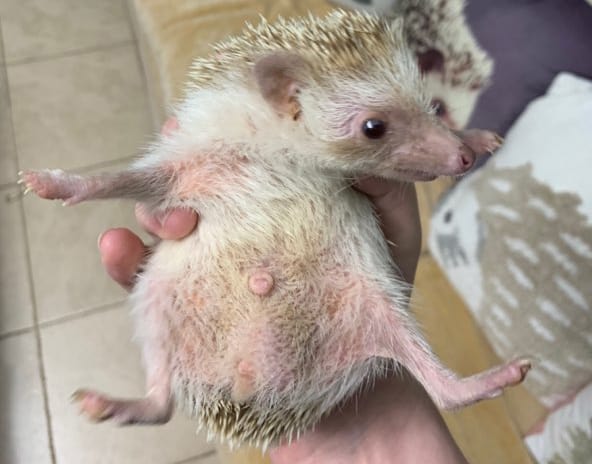 |  | |
| Gender verification | Male and female genitalia are external to the body and very distinguishable. The female's genitals are just above the anus and the male's genitals are mid-belly (not to be confused as a belly button). | Gender verification can be quite difficult with tenrecs since their genitalia are hidden inside. This area where the genitals are housed is called the cloaca, which is a urogenital opening. |
| Body odor | In a recent Quilly video, he covers the topic of whether a hedgehog smells or not. A clean hedgehog has no musky or distinguishing odors, unlike the tenrec. As a result, their body odor is entirely dependent on hygiene. | This is usually one of the main dividing lines when someone is considering a tenrec for a pet. They have a musky odor that some have described as smelling like corn chips or Doritos. It has been said that the females don't have the same musky odor. |
Social Characteristics of Hedgehogs and Tenrecs
When it comes to the social personalities of hedgehogs versus tenrecs, they are pretty much the same. While we know that there are some that will disagree, it's true. This is because each animal has its own personality. There have been cases of hedgehogs that would not warm up to anyone – ever! And there have been other cases where hedgehogs interact very well with practically everyone they encounter. Much of this is related to how much they were handled by the breeder and continued to be held by the new owner. These factors shape the personalities of tenrecs as well.
Like the hedgehog, tenrecs are fine to live a solitary life without a cage mate and many prefer it. The same rules apply to hedgehogs or tenrecs about not housing two or more males together, since they will fight. Also like hedgehogs, you may (or may not) be able to house two or more females together. This is entirely dependent on the varying personalities.
One difference between the two is their defense mechanisms. Hedgehogs are more passive defensively and will curl into a spiny ball while making hissing and popping noises. This is how it defends itself against anything it perceives as a threat and will retain that posture for as long as they feel threatened. On the other hand, when tenrecs feel threatened, they are more likely to bite than to ball up. Most pet tenrecs have been well socialized, so this may not be a concern.
Health & Nutrition Needs Compared
Dietary needs of Hedgehogs vs Tenrecs
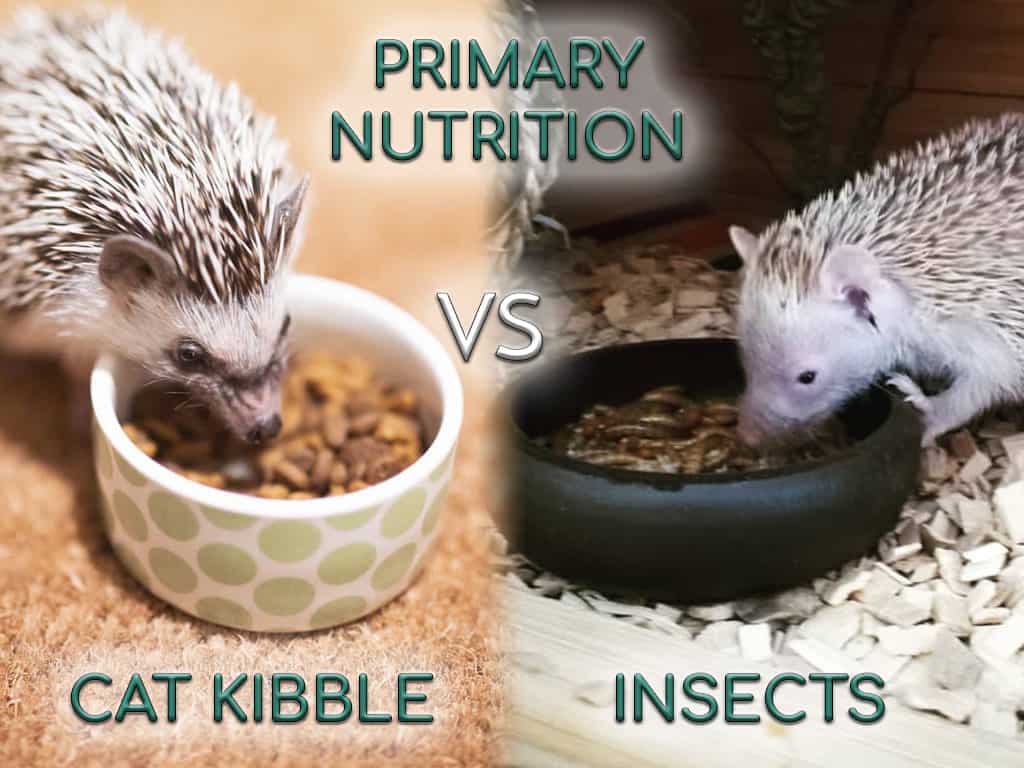
The nutritional requirements for hedgehogs versus tenrecs is different. While they are both omnivores, the hedgehog's diet mainly consists of a high quality cat kibble, with insects and select human food offered as treats. You can read a deeper discussion of that in two articles we have previously published: The Best Hedgehog Food List and Hedgehog Safe Food Ideas.
On the other hand, tenrecs need to have an insectivore diet as their primary source of nutrition. And to supplement their diet, various vegetables and proteins can be offered. While researching this article, we found that many tenrec owners cited pickiness when it comes to the tenrec palate. So apparently hedgehogs and tenrecs can both be picky eaters.
Hibernation in Hedgehogs and Torpor in Tenrecs
Before we discuss hibernation and torpor, it's important to understand that they are different, yet similar. Hibernation is a period of deep sleep in which the animal's core temperature goes way down as well as their rates of breathing, heart, and metabolism. In a state of torpor, the key difference is that the animal is not in a deep sleep even though all vital life rhythms decrease. They can actually rise in a stupor-like state before returning to sleep. Both hibernation and torpor are usually triggered by environmental factors like temperature and hours of daylight. These indicators induce these survival mechanisms.
Hibernation is a useful survival mechanism if a hedgehog lives in the wild and the changing seasons create a shortage of food. However, domesticated hedgehogs don't have those dangers and also don't have the ability to store the fat necessary to sustain them through hibernation. It can actually be dangerous for them. If you'd like to learn more about hedgehog hibernation signs and symptoms, you can explore that here. Because of this danger, it is more critical to control the environmental temperature and light cycle of hedgehogs.
Tenrecs enter torpor some time between fall and spring and it typically lasts from 3-5 months. Although there is no shortage of food or harsh environment, domesticated tenrecs will safely enter and exit torpor naturally. If you want a pet that is active year-round, this might be a deal-breaker for you. However, if not having to worry about tight temperature or lighting controls appeals to you, the tenrec may be your dream pet. No studies have been done on the health effect of preventing a tenrec from entering torpor by strictly controlling their lighting and temperature.
Hygiene Differences Between the Two
Water Baths for Hedgehogs vs Sand Baths for Tenrecs
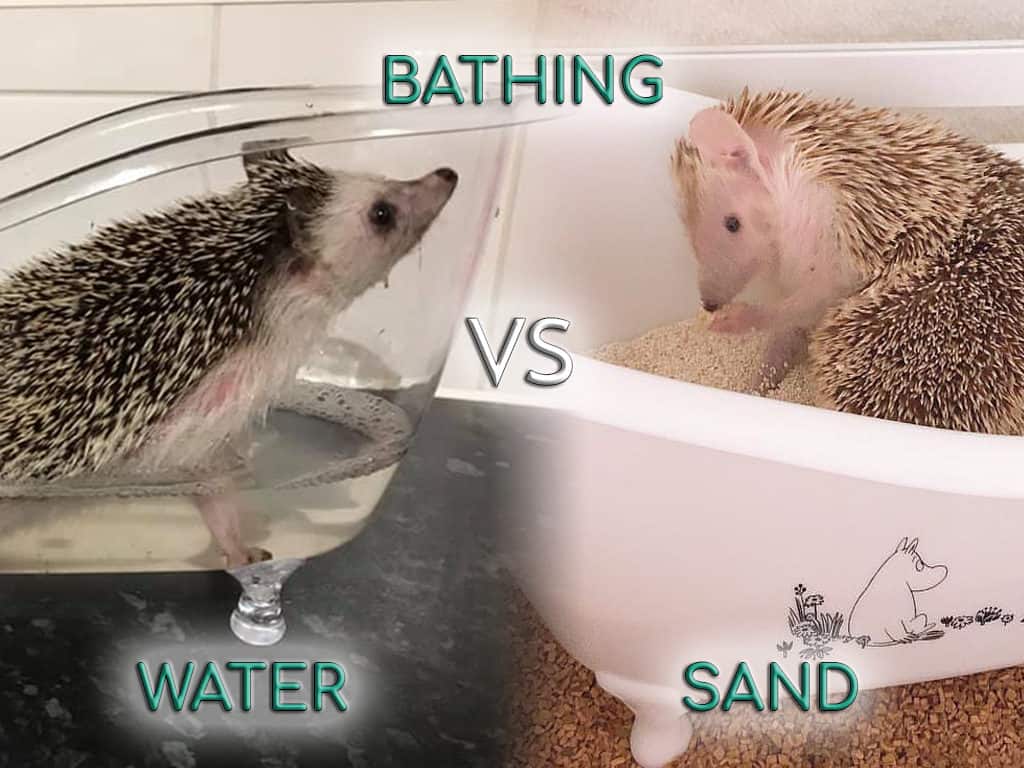
When it comes to bathing hedgehogs, water is the preferred method. Because they walk through their bodily waste, they need daily foot baths and usually 1-2 full baths per month. However, sand baths for hedgehogs is a topic that is hotly debated in the hedgehog groups. There are two opposing camps: one that is pro-sand baths for hedgehogs and those that are anti-sand baths for hedgehogs. Since hedgehogs have external genitals, there is a greater risk of sand getting where it doesn't belong and causing a UTI (urinary tract infection). Also, those that do decide to give sand baths a try should stick with children's play sand or reptile sand. Chinchilla sand and diatomaceous earth are substances that are too fine and will cause respiratory issues with prolonged use.
Quite the opposite to hedgehogs, tenrecs should be given sand baths (in enriched reptile sand preferably). Water baths should almost never be given as they can cause skin issues. Tenrecs are perfectly capable of using sand to exfoliate dead skin cells and regularly clean themselves. Because of the orientation of their genitalia, the risk of a UTI isn't as great. As a word of caution, some tenrecs will use their sand bath area as a litter area, so regular changing of sand may be necessary.
Bodily Waste Elimination in Hedgehogs vs Tenrecs
Unlike hedgehogs, tenrecs will typically choose one (or two) different areas to use as their elimination area. And they do that naturally without any training. Because of this consistency in toileting habits, they don't get the infamous “poop boots” that hedgehogs are known for.
In contrast, hedgehogs poop and pee EVERYWHERE unless their owner is able to litter train them. The steps to accomplish this is outside the scope of this comparison between hedgehogs and tenrecs. If you'd like to learn about litter training please follow this link: How to Litter Train a Hedgehog. Hedgehogs obtain their poop boots mainly from running on their wheels at night.
Both Hedgehogs and Tenrecs Anoint
One thing that hedgehogs and tenrecs have in common is they both anoint. However, how they each accomplish this is vastly different. Hedgehogs look rather bizarre as they produce a foamy spittle and then contort their neck around to spread this froth on their quills. It almost looks like something out of a demonic horror movie. You can learn more about it in the article Hedgehog Anointing Explored.
Tenrecs, on the other hand, are much more genteel about their anointing. They will spit saliva onto their paw and spread that on their quills. Also, they don't foam when they anoint and the process looks very much like they are just grooming themselves.
Longevity Of Hedgies And Tenrecs
Hedgehogs have a short life span of only 3-7 years. If you get attached to animals deeply and the loss of them is soul-crushing, you might want to reconsider owning a hedgehog. Early on, we found that in the hedgehog community there were those that had difficulty processing the passing of their hedgie. For that reason, we wrote an article that biblically proves that there will be animals in heaven. We encourage anyone who has a pet to read it.
When it comes to longevity of hedgehogs vs tenrecs, we believe tenrecs rank right up there. The life span of a pet tenrec is around 13 years, but there are always exceptions to the rule. The oldest known tenrec lived in the Blank Park Zoo in Des Moines, Iowa. He was an astonishing age of 22 back in 2011 and we imagine that he has gone home to heaven at this point.
Environmental needs of Hedgehogs Compared To Tenrecs
Both hedgehogs and tenrecs are nocturnal. And we have already touched on the hedgehog's need for heat and lighting control versus tenrecs, who don't need these artificial environmental controls. So we won't rehash that here.
With hedgehogs, a horizontal cage is the optimal housing situation due to their poor eyesight and inability to hang on when they climb. Cage requirements for a hedgehog are discussed in the article, “What Kind Of Cage Does A Hedgehog Need?” Within the cage, measures must be taken to prevent climbing for their safety. Also, their favored activity is running on an exercise wheel.
With a tenrec, a cage that has a vertical orientation is the better choice. While it is recommended to provide an exercise wheel, they are more likely to take a leisurely stroll on it than run on it. They love to climb and thrive in an environment that closely matches their natural habitat.
Final Thoughts on Hedgehogs and Tenrecs
Throughout this article, we have covered much ground comparing and contrasting hedgehogs vs tenrecs. Clearly they are similar in many ways, but also different. Many hedgehog lovers are equally enthusiastic about tenrecs. Regardless of personal preference, each of these unique and special creatures have the ability to make someone that sees them stop and say, “Awwwwww”. Here at Heavenly Hedgies, we call that the aww-factor. Maybe you'll consider making one of these awesome animals your dream pet?
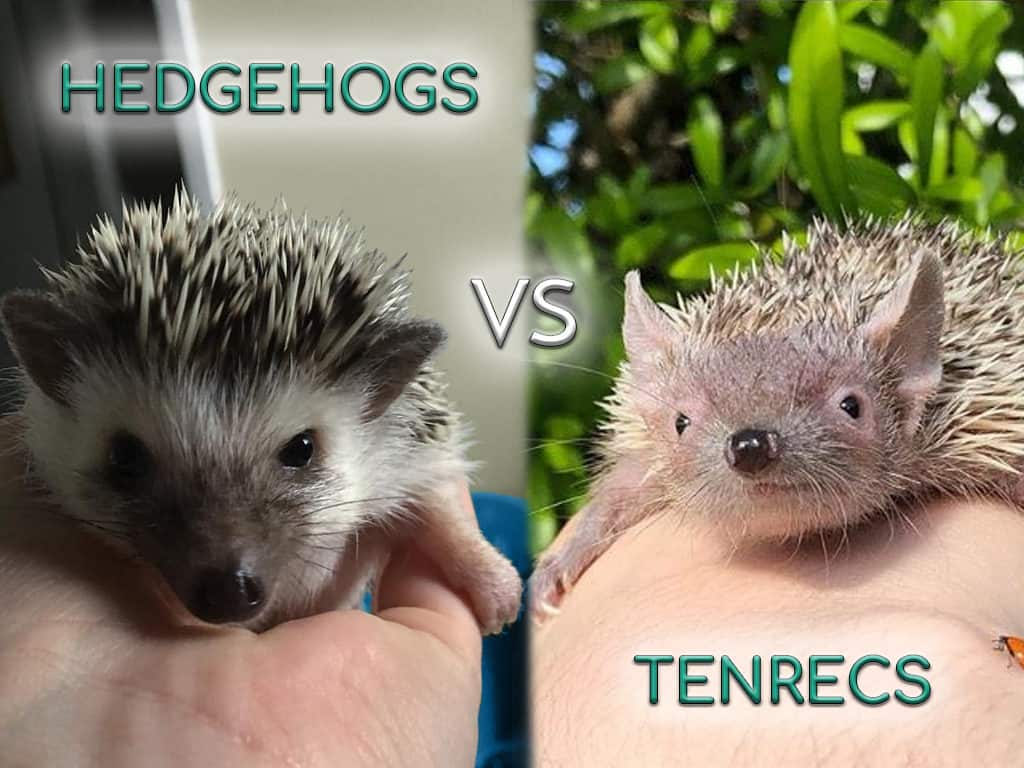


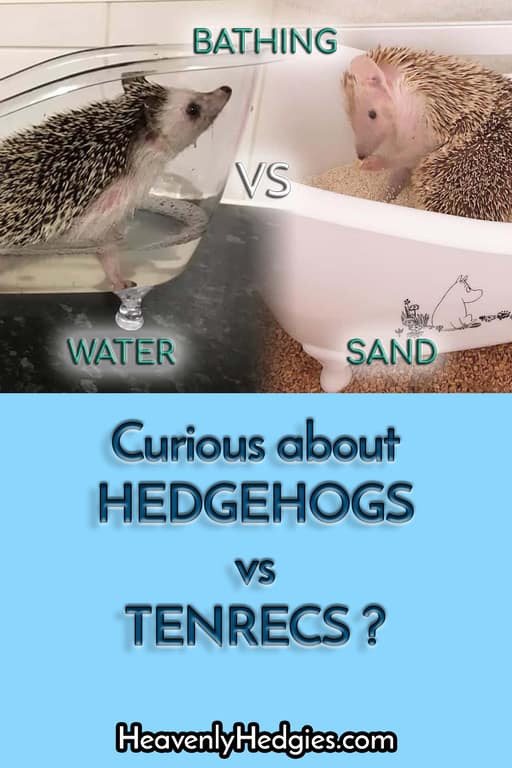
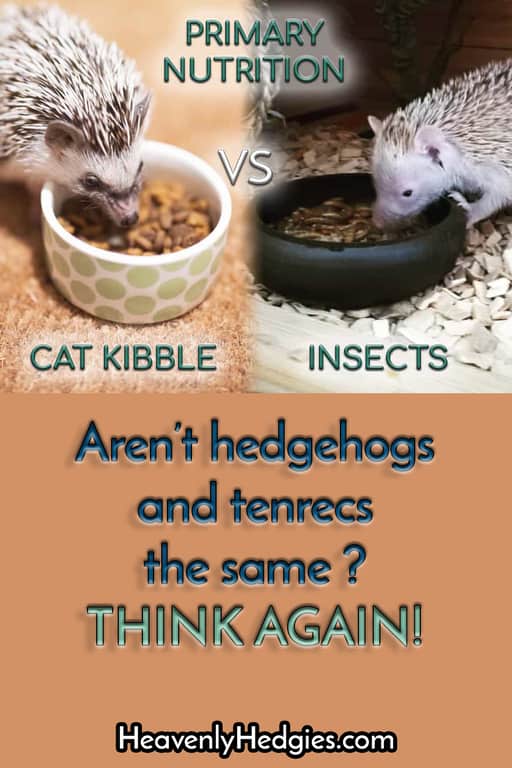

Hi, I do believe this is an excellent blog. I stumbledupon it 😉 I will come back yet again since i have book-marked it. Money and freedom is the best way to change, may you be rich and continue to guide others.
Thank you for your feedback.